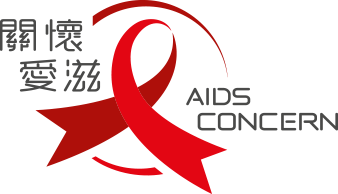Press release
Youth condom use rate is deteriorating
AIDS Concern advocates strengthening sex education for youth
AIDS Concern summarize the data from AIDS Concern on the use of condoms and contraceptive methods of the youth in the past five years (2013-2018) and the data on the infection rate of sexually transmitted infections (STIs) among youth in the past four years (2014-2018) to understand the sexual behavior patterns and reasons among heterosexual sexually active youth aged 14-25 in Hong Kong.
Data on youth condom use rate and contraceptive methods in 2013-2018
The total 3,013 respondents, who had received the AIDS Concern sexual health check and conducted more than one sexual behavior within the past six months. Among them, 24% of the respondents did not use condoms in the first sex, and 5% of the respondents mentioned that their condoms broke or were taken off during sex. The survey also found that the condoms use rate of the respondents having sex with “Regular sex partners” or “Boy/girlfriends” was less than 50% in the past five years. In 2018, it dropped to less than 30%.
According to the survey, there are three main reasons for the respondents of not using condoms. The key reason is related to “Intimate relationship”. 30% of respondents said that “Partners asked them for not using condoms” (15%), “Preventing from affecting the mood” (6%), “embarrassed” (5%), “Advoiding to do harm to the relationship” (4%). And some reasons are related to “Lack of Sexual health knowledge”, such as “lack of the awareness of self-protection” (6%) and “Perceived low risk of STIs infection /pregnancy” (13%). Other reasons of not using condom include “no condoms available” (14%) and “using other contraceptive methods” (6%).
In terms of contraceptive knowledge, only 45% of the respondents showed that they have correct knowledge on the contraceptive methods, including “condoms” and “contraceptive pills”. Although “Coitus interruptus” is a wrong method of contraception, it has become the second popular method of contraception among the respondents in the past five years. It reflects that knowledge level on sexual health among youth is low and this situation is worrying.
Sexually transmitted infection rate among youth in 2014-2018
In the past five years (Table 1), total 1869 (1179 male / 690 female) youngsters have received AIDS Concern’s urine test service. The survey found that the average rate of STIs (chlamydia and gonorrhea) infection among the service users in AIDS Concern in the past five years is 8.6%. The average infection of STIs among young women is 15.1%, which is much higher than the TeSSHS’s result by the University of Hong Kong which is 4.9%.
Moreover, the number of young women tested occupied less than half of the total number of testing users in the previous years. In response to the high STI infection rate of the young women, AIDS Concern kicked off series of programs to motivate the young women to do testing. “The establishment of a healthy and friendly environment and the reduction of the stigma associated with sex can enhance the motivation of young people to undergo testing. Most important, the testing can help them to understand their physical condition and receive treatment as soon as possible.” Ms. Bau Chung, Assistant Project Manager, Youth team of AIDS Concern said.
“Since the survey result reflects the lack of knowledge on sex among that youth induce to the low condom use rate among the youth. AIDS Concern believes that comprehensive sexual education is the long-term solution to reduce the risk of STIs infection.” Ms. Mandy Cheung, Program Director of AIDS Concern concluded.
Mr. Jim Hoe, Manager of Advocacy and community research of AIDS Concern made a comment that the importance of sex education is being underestimated. Young people cannot acquire knowledge on sex in the classrooms, and then they search the answers via online platform while the answer is not accurate indeed. “Sex education should be implemented as an independent subject. The Hong Kong government should refer to the experience of China and foreign countries on sex education. The content of sex education should be standardized the teaching hours and content of sexuality education. Moreover, regular training on sexuality education training for teachers and social workers should be provided.” He suggested.
Table 1: Number of youth having urine tests for STIs in 2014-2018 (by gender)
| Years | Young Men | Young Women |
| 2014/15 | 157 | 128 |
| 2015/16 | 463 | 173 |
| 2016/17 | 480 | 135 |
| 2017/18 | 79 | 254 |
| Total number if testing users | 1,179 | 690 |
*Female infection rate among Hong Kong youth (18-26 years old) with sexual life in the past 12 months.
For enquiry, please contact Ms. Tobey Tse (Marketing and Communications Officer)
Tel: 2864 1315 Email: tobey.tse@aidsconcern.org.hk<mailto:tobey.tse@aidsconcern.org.hk>

